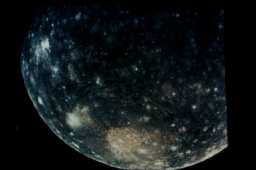This image shows the varied terrain of Ganymede.
Click on image for full size
NASA
Surface of Ganymede
The surface of Ganymede is halfway between that of
Callisto and that of
Europa. Portions of the crust are of ancient age, while other portions are relatively
new.
The little white dots shown in this image are the many imact craters on Ganymede. Portions of Ganymede that are heavily cratered have not been resurfaced, indicating that they are of ancient age.
Besides the craters, the surface of Ganymede is characterized by grooved terrain, light terrain, dark terrain.
The many different kinds of terrain exhibited by Ganymede are an indication that it has experienced processes of alteration in the interior during it's evolution.
You might also be interested in:
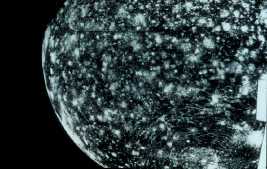
The surface of Callisto is deeply pockmarked with craters. It looks to be perhaps the most severely cratered body in the solar system. There are also very large craters to be found there. The severity
...more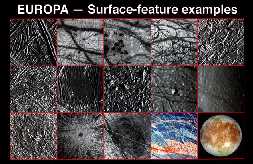
The picture to the left shows examples of the many amazing different surface features of Europa. Many exciting discoveries were made about Europa during the Galileo mission. The surface of Europa is unusual,
...more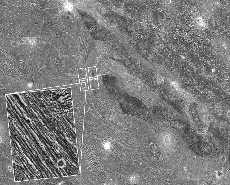
There has been no icy volcanism on Ganymede, but it does seem that there has been a kind of tectonism, or surface motion. Examination of the surface of Ganymede reveals many kinds of faulting and fracture.
...more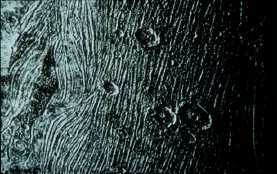
This image shows an example of the grooved terrain of Ganymede. The image clearly shows that some things hit Ganymede and made craters after the grooves were made, because the grooves are underneath the
...more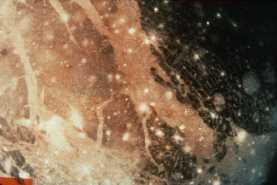
This image shows an example of the light terrain of Ganymede. The image shows the contrast between the light terrain and the dark terrain of Ganymede. The light terrain is where the grooves of Ganymede
...more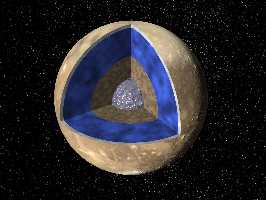
The diagram to the left shows a cutaway of the possible interior structure of Ganymede, based on recent measurements by the Galileo spacecraft. It shows a small core of metal, overlain with some rocky
...more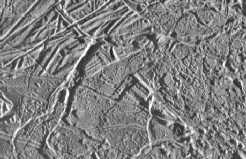
This is an example of terrain of Europa which has been flooded by fresh water which subsequently re-froze on the surface. The edges of the flow are "lobate" meaning rounded like a puddle of water. This
...more


